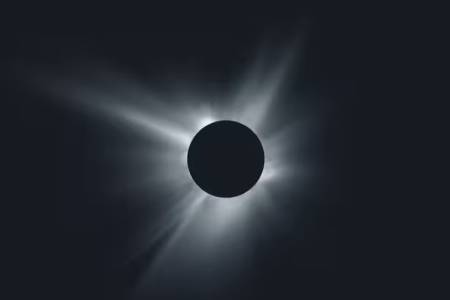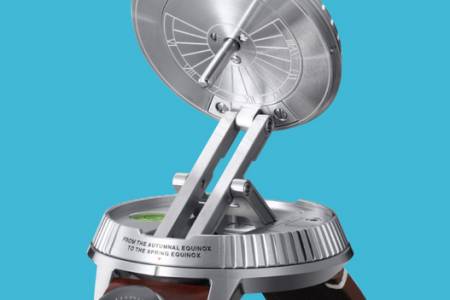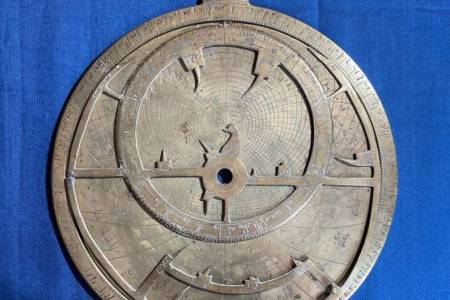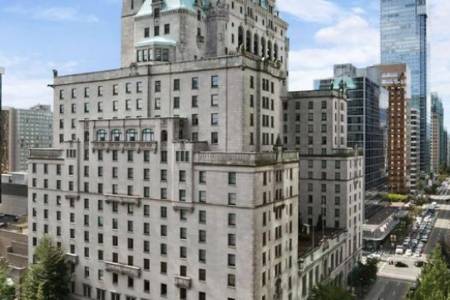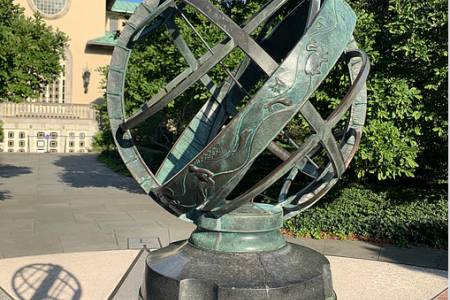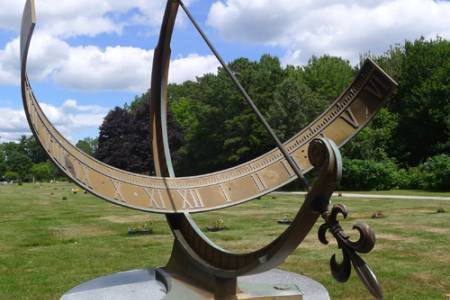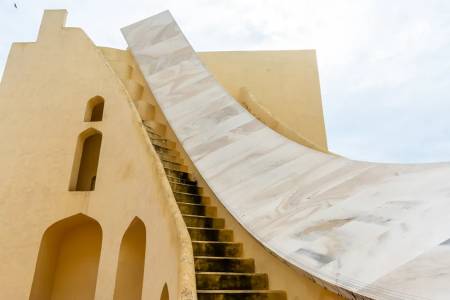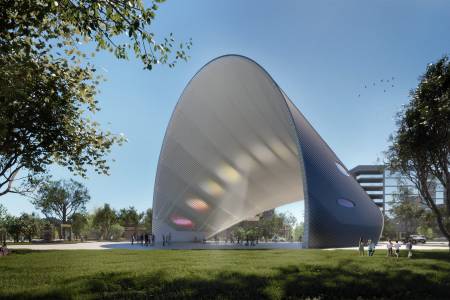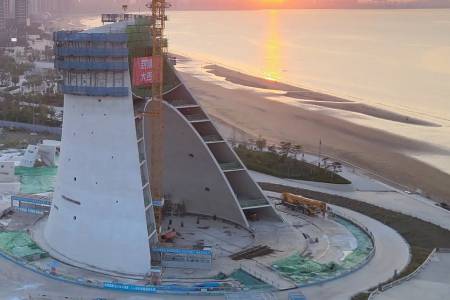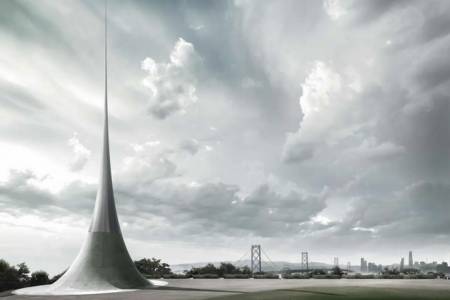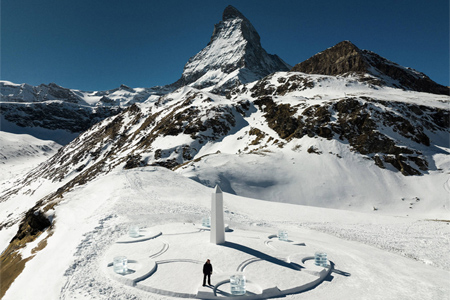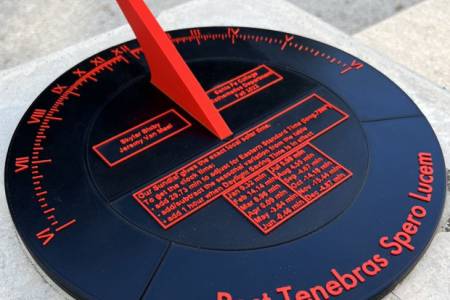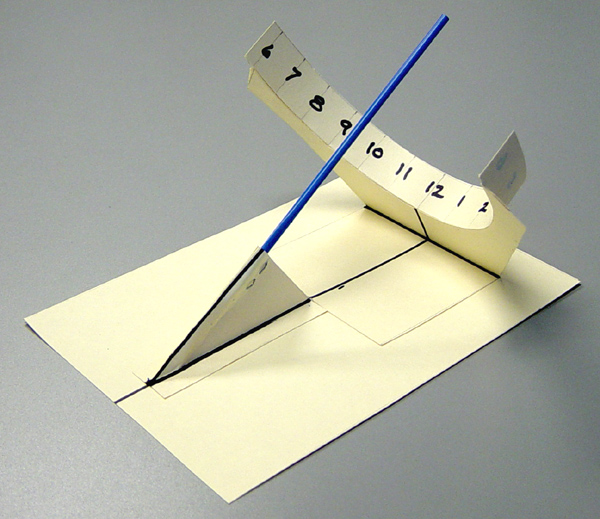
This Sundials for Starters appeared in The Compendium in June, 2007
by Robert L. Kellogg, Ph.D.
In this day and age of computers, I began musing what is one the least complicated sundial to build. In the last Compendium I showed the classical method of graphically constructing a horizontal dial, and the introductory NASS Sundial CD discs contain power point presentations for creating a variety of sundials. Here is a simple equatorial dial that I’ve used in sundial demonstrations. It requires several pieces of cardboard and a coffee stirrer.
Step #1. We need a base to hold the coffee stirrer gnomon. The front face is 3”, but the gnomon ridge of length L is a function of latitude. (See Table below). For those who enjoy mathematics, the length L is given by
 inches
inches
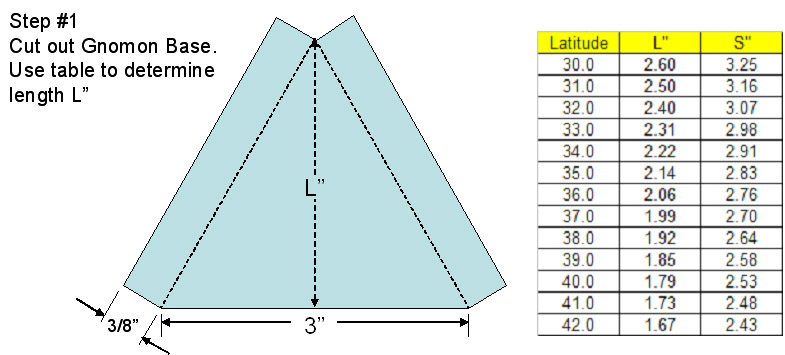
Step #2. Fold the gnomon base along the dotted lines and glue the coffee stirrer into the top ridge of the gnomon base, letting the stirrer protrude by about 5”. Be sure that the coffee stirrer is firmly against the fold. An extra staple helps hold it while the glue dries or strengths it if you use a glue stick.
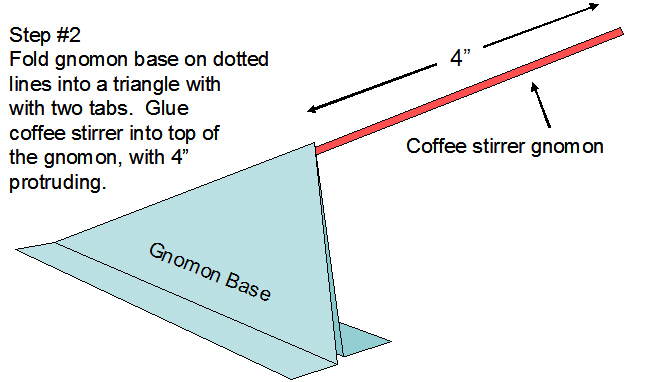
Step #3. Next, we need a base to hold the equatorial band. The equatorial base has a semi-circle cut out with radius of 2 3/8”. The support sides can be cut fancifully, but the semi-circle needs to be 3/4” from the bottom fold line. Past the fold line is a support tab that is S inches long. (See Table above). The value of S will place the equatorial base just far enough in front of the gnomon base so that the coffee stirrer goes through the center of the cut out semi-circle. Using similar sides of triangles, we find that S, the distance between gnomon and equatorial base, is:
![]() inches
inches
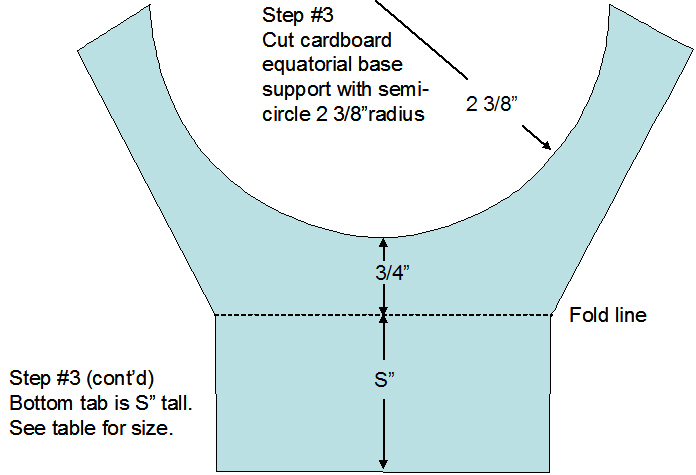
Step #4. Here we create the equatorial band itself, spanning 6am to 6pm local solar time. The semi-circle radius of 2 3/8” allows the hour lines to be almost exactly 5/8” apart. The total distance of the 6am to 6pm hour lines is therefore 7 1/2”. I’ve allowed a little bit of extra length for the end to end measurement of equatorial band that allows for labeling the hour lines. Along one side of the band, cut a series of tabs. These will be used to glue the band to the equatorial base.
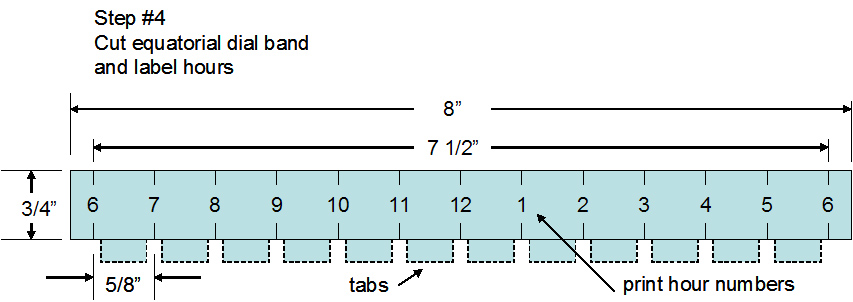
Step #5. Glue the equatorial band to the equatorial base. Make sure that the 12 o’clock hour line is on the center line of the equatorial base. The 6am and 6pm hour lines should just make it to the top of the equatorial base semi-circle cut out.
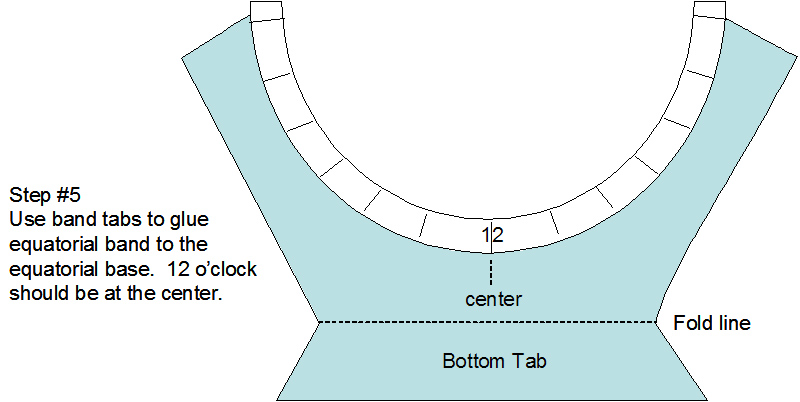
Step #6. On a piece of cardboard about 5”x7” draw a center line along the long axis. Glue the gnomon base to the stand’s center line with the small end of the gnomon base about 1/2” from the end. Next, glue the equatorial base tab to the stand, just touching the gnomon base with the fold line perpendicular to the stand center line.
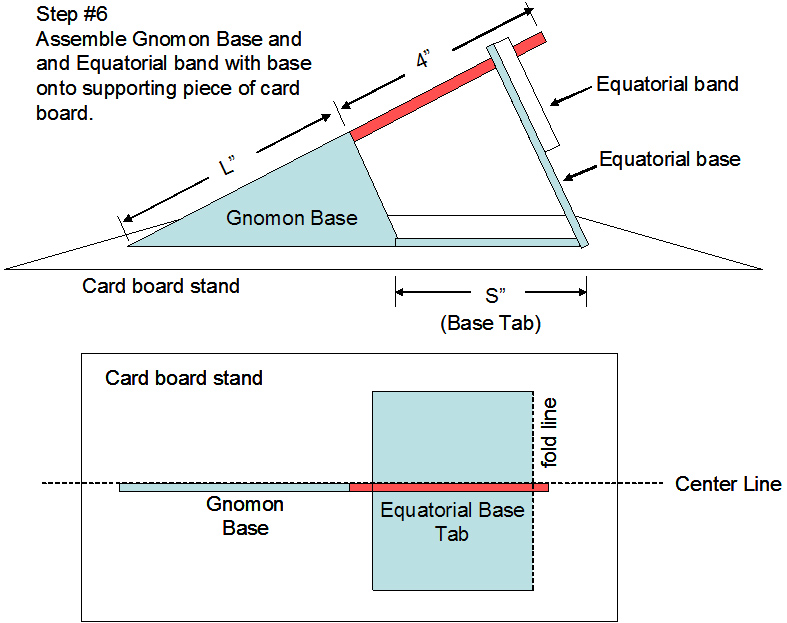
Step #7. Tilt the equatorial base and band until it is perpendicular to the coffee stirrer gnomon. You may have to make a small paper support to help stabilize the equatorial base and band position. When properly angled, the coffee stirrer gnomon will pass through the center of the circle made by the equatorial base and band.

Step #8. Take the dial outside and align it true north-south, with the gnomon base at the southern end. Read the shadow of the coffee stirrer gnomon on the equatorial band. This will be correct local solar time for every day of the year. Of course, to match clock time, both longitude compensation and the equation of time must be added to the dial time. Have fun.

